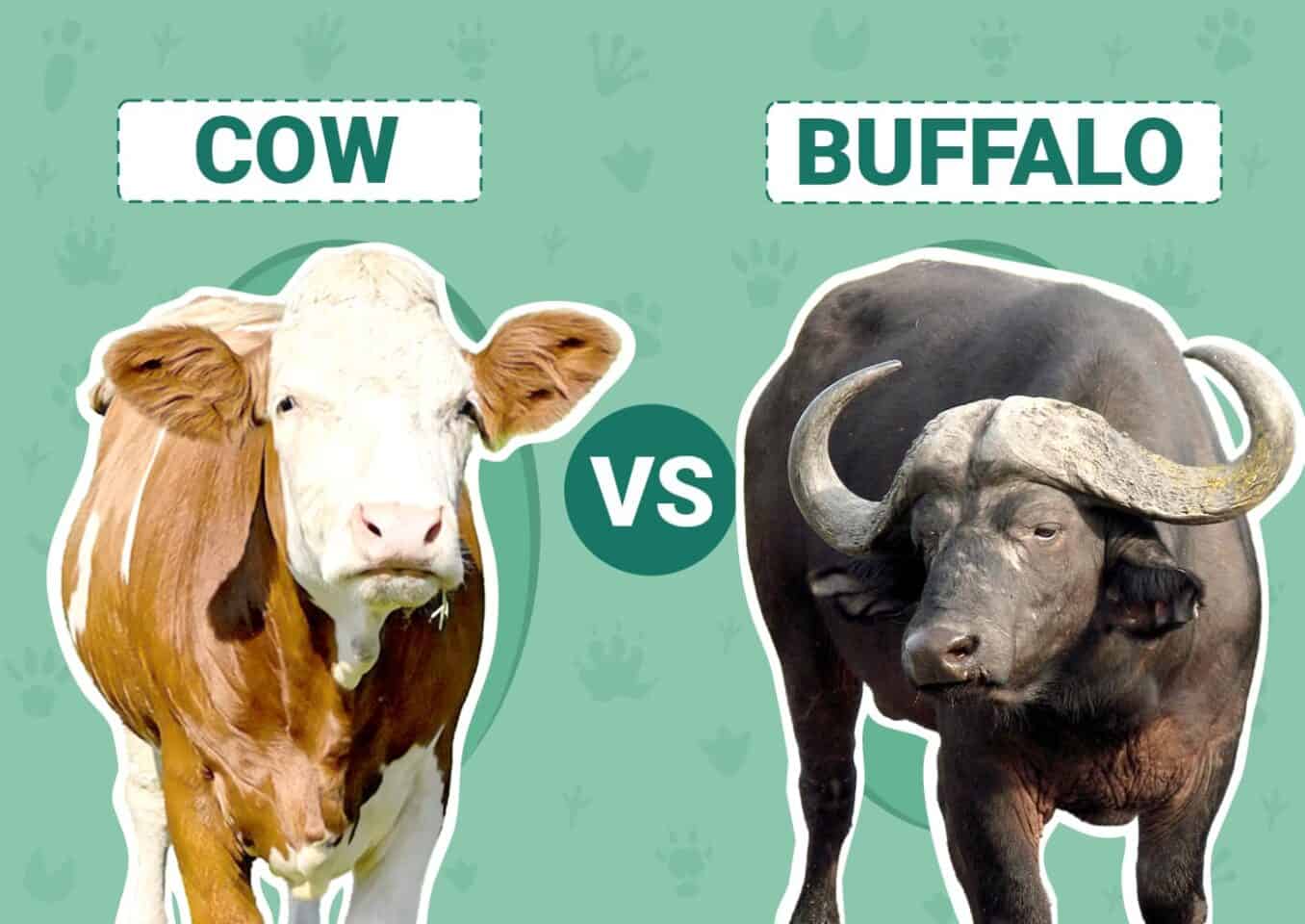Cows and buffalos share the same ancestor, the auroch. Over the years, they developed into two distinct species with their own set of subspecies and breeds.
Both cows and buffalos have had close relationships with humans ever since they became domesticated thousands of years ago. Now, specialized breeds get bred for specific purposes, such as harvesting beef and milk.
There are several distinct features that cows and buffalos have that make them unique from each other. We’ll go over these differences in detail to help you determine which species is right for you.

Visual Differences
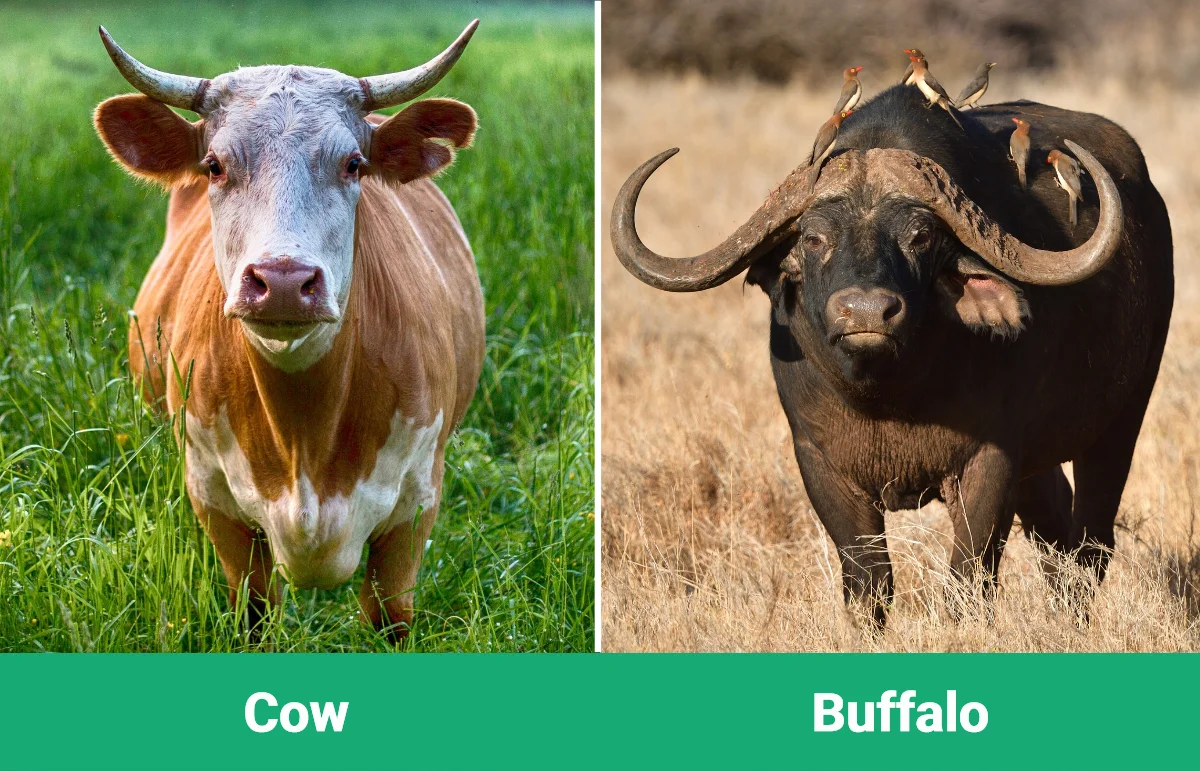
At a Glance
- Origin: India
- Size: 62–69 inches
- Lifespan: 18–22 years
- Domesticated?: Yes (8,000–10,000 years ago)
- Origin: Asia and Africa
- Size: 60–75 inches
- Lifespan: 25–40 years
- Domesticated?: Yes (6,000–7,000 years ago)

Cow Overview
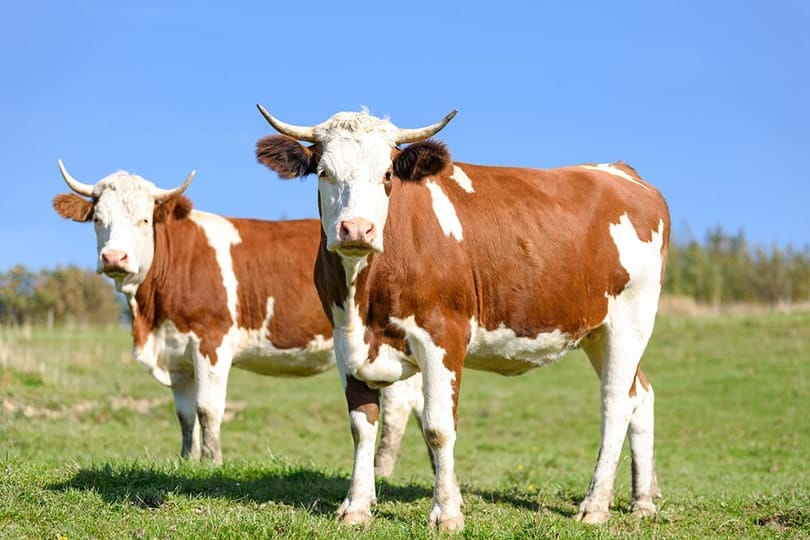
Cows, or domesticated cattle, have been with humans for thousands of years. With selective breeding, humans developed cows for more specific purposes. Today, there are over 1,000 recognized cattle breeds around the world.
Characteristics & Appearance
Cows are bred for different purposes, which affects their appearances. For example, most cows bred for beef will be stocky and have shorter necks. On the other hand, dairy cows are skinnier, and females have larger udders.
The basic colors of cows are shades of black, red, or white. They can also have spots or mixed patterns.
One study discovered a common trend that as cows grow older, their temperament most likely changes according to their gender. Female cows became more docile while bulls became more unpredictable.
When it comes to domesticated cattle, temperament is essential. Breeders focus on selective breeding to produce better cattle that adapt well to frequent handling. It’s crucial for cows to quickly get used to human interaction for the safety of the handlers. Therefore, most domesticated cattle have calm temperaments. Despite their large stature, they tend to run away from a threat rather than challenge it.
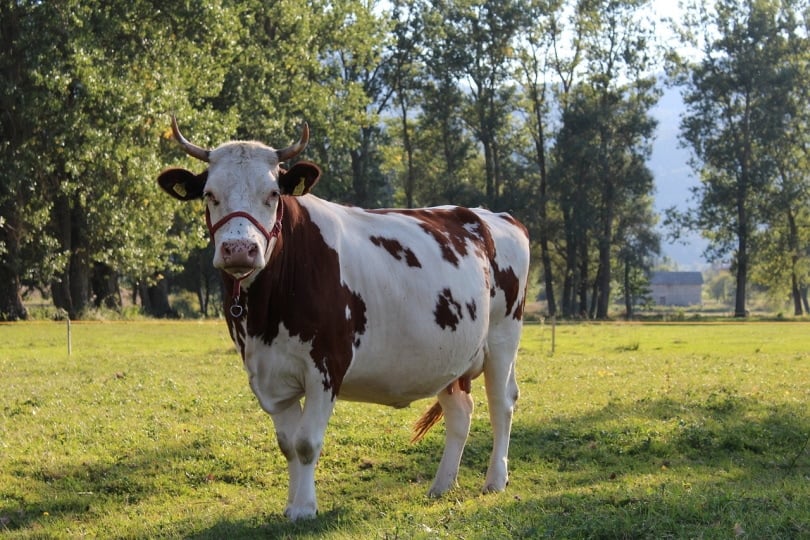
Uses
In general, breeds of cows get grouped into three types:
- Beef cattle
- Dairy cattle
- Dual-purpose cattle
Beef cattle are specifically for meat production. In North America alone, there are over 60 types of beef cattle. The most common beef cattle in the US is the Angus cattle.
People breed dairy cattle specifically for milk. The most common dairy cattle in the US is the Holstein-Friesian, which is the iconic cow breed with black and white spots.
Dual-purpose cattle are cattle that serve both purposes of beef and dairy cattle. These types of cattle are typically smaller than beef cattle and don’t produce as much milk as dairy cattle. An example of dual-purpose cattle is the Charolais.

Buffalo Overview
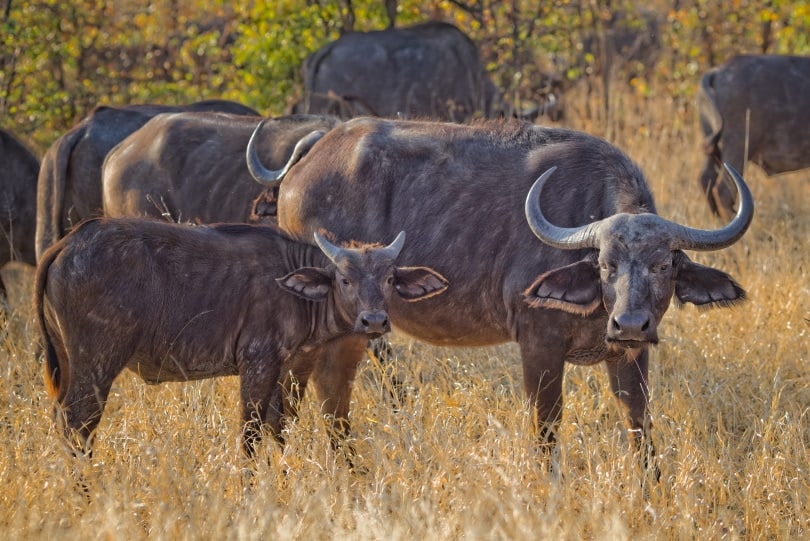
There are two main types of buffalo—the water buffalo and the cape buffalo. Many people include the American Buffalo in the category of buffalos, but it’s actually bison. One of the main differences between buffalos and bison is that bison have humps. They also have smaller and sharper horns than buffalos.
Characteristics & Appearance
There are about 74 different breeds of domesticated water buffalo. This type of buffalo can weigh up to 1 ton. They’re typically black or gray and have a few white streaks around their necks.
Water buffalos are mostly domesticated, but there’s a small population of wild ones. Domesticated water buffalos tend to be gentle and don’t react adversely to getting milked or ridden. However, wild water buffalos have a reputation for being aggressive and unpredictable.
Cape buffalos, or African buffalos, are the largest of buffalos. They may not grow to be as tall as the water buffalo, but they’re hefty, and bulls can easily weigh over 1 ton. They have black coats, and males have a set of massive horns on their heads that can grow to 5 feet in length.
Unlike water buffalos, cape buffalos are not domesticated animals. They’re unpredictable and can cause severe damage. They can be extremely dangerous when provoked or threatened, and even lions in the wild know not to mess with an adult cape buffalo.
There are also cases of cape buffalos attacking humans. They’re extremely protective of their herd and aren’t afraid to attack if they perceive that an intruder infiltrated the herd.
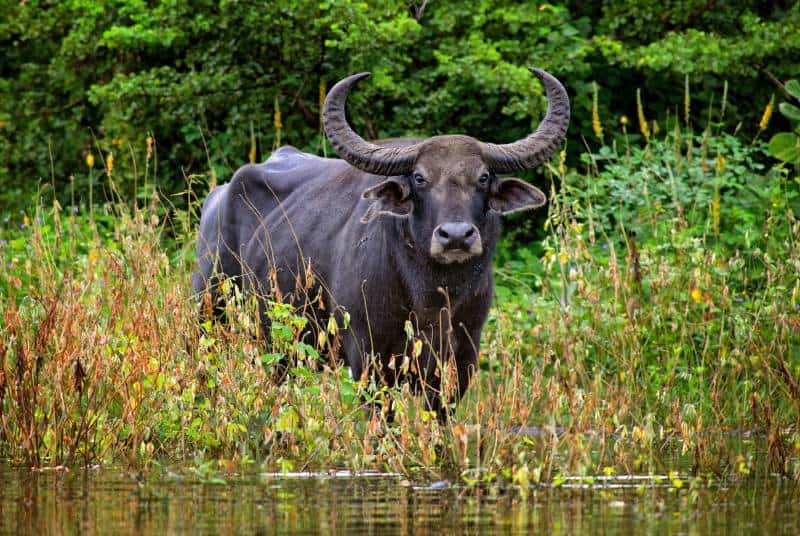
Uses
Domesticated water buffalo get bred to provide milk and meat. Some people also use them for transportation because they can carry heavy loads. They also have broad hooves that help them walk through mud and swamps without sinking.

What Are the Differences Between Cows and Buffalo?
Domesticated cows and buffalo share some similarities, such as getting bred for meat and milk. However, it’s important to remember that they’re distinct species from each other. Here are some common differences between the two.
- Size: Although there are pretty large cattle breeds, buffalo tend to be bigger and heavier. When it comes to a fight comparison, a buffalo is more likely to come out on top. They have lions and crocodiles as natural enemies and have the size, horns, and aggressiveness to stand up to a challenge.
- Color: Cattle can come in different shades of black, red, and white, and they can also have spots and patterns. Buffalos don’t have as many color varieties, and most buffalo breeds will be black or dark gray. Some may have streaks of silver, but they’re often barely noticeable.
- Horns: For the most part, buffalo have larger horns than cows. Of course, there are exceptions, such as the Andole-Watusi and Texas Longhorn. However, the current record holder for the longest horns is an Asian Water Buffalo, with a set of horns measured at 13 feet and 9 inches.
- Meat: While beef is popular in the US, many Asian and African countries consume more buffalo than beef. Buffalo meat tends to be leaner and tastes gamier than beef. It has less cholesterol than beef, so it can be a healthier option.
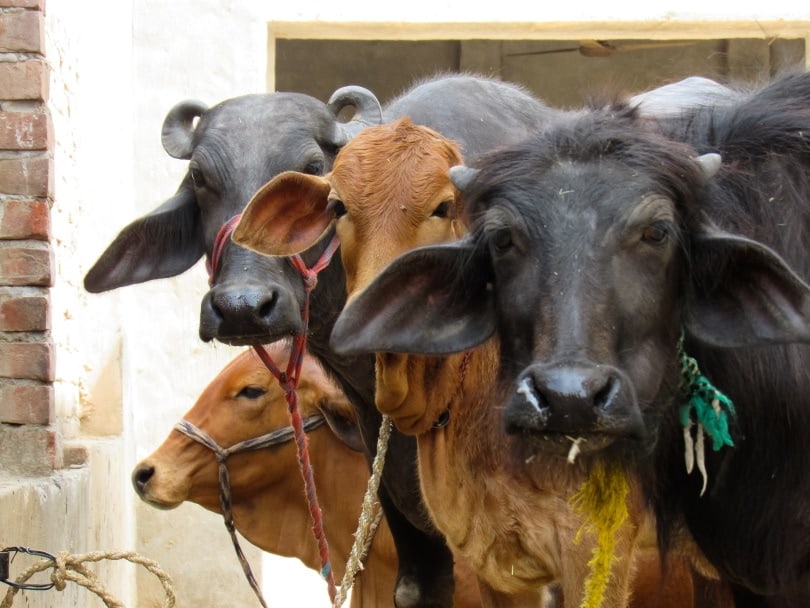

Which Breed Is Right for You?
Overall, cows and buffalo share some similarities, but they have significant differences that classify them as distinct species. Buffalos tend to be bigger than cattle and get bred for general use, such as meat and milk production and transportation.
Cattle tend to have more specific breeding practices, which have produced a wide variety of breeds with specialized purposes over the years. Although some cattle breeds exist for both meat and dairy production, most cattle will make more of one product over the other.
Water buffalos have become more popular in the US because of their docile nature and the rise in the popularity for their cheese, mozzarella di bufala. However, cattle are still a lot more common in the US.
When it comes down to choosing an appropriate breed, it’s important to consider your intended purpose and figure out whether you want beef or dairy cattle. If you’re looking for a companion or pet, you can even opt for a water buffalo or a good-natured cattle breed, such as Devon and Highland cattle. Easy beef cattle for beginners include the Black Angus and Shorthorn.
Featured Image Credit: (Cow) artellliii72, Pixabay (Buffalo) RonPorter, Pixabay
